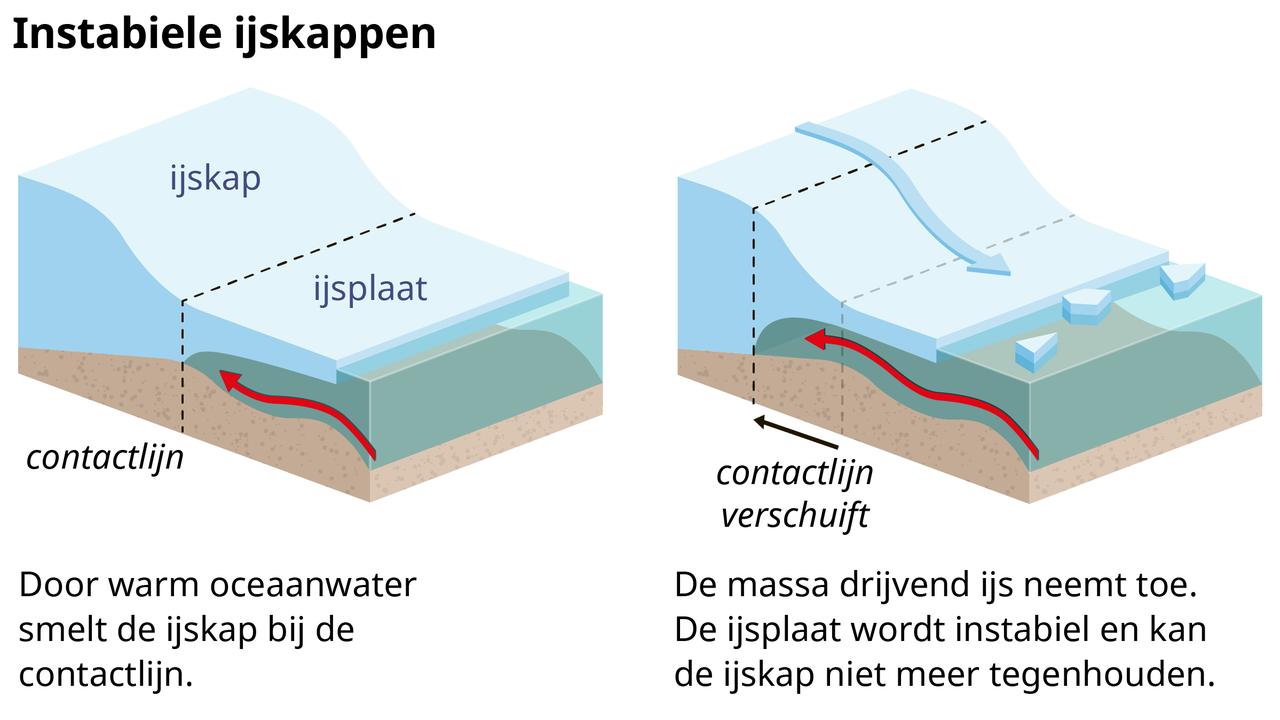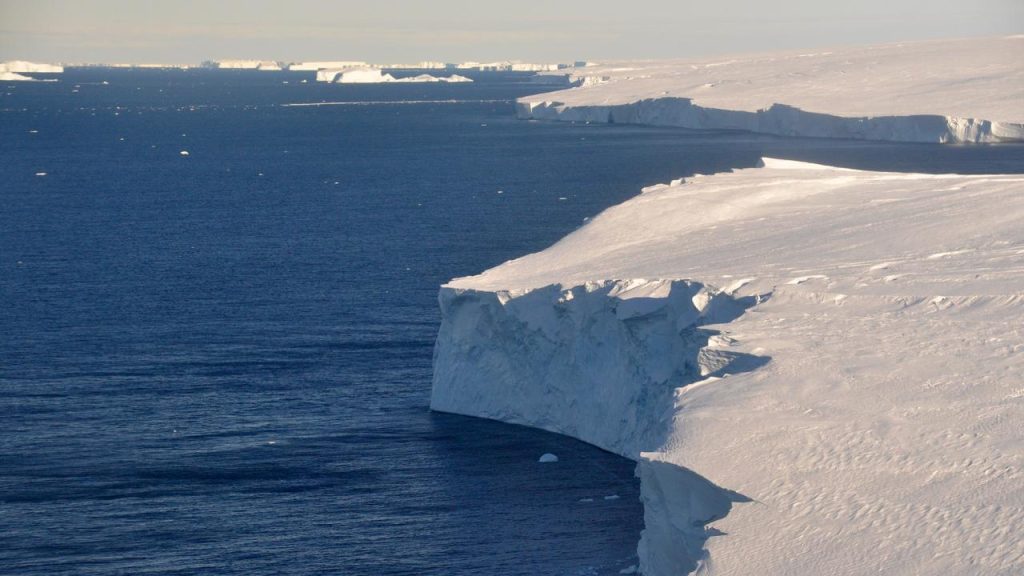There is enough ice in Antarctica to raise sea levels by several metres, with dire consequences for the quality of life in the Netherlands. But scientists are having a hard time understanding how quickly ice can melt, and when all this meltwater on our coast will end.
At the height of the last Ice Age, about twenty thousand years ago, sea level was 120 meters lower than it is today. As the weather warmed and the ice began to melt, sea level rose at a rapid pace.
At its peak, sea level rise was at least 4 centimeters per year, more than ten times the current rate. In a lifetime, the water can rise several meters. And that’s while global warming has been much slower than it is now.
It has long been a mystery to scientists how sea levels could have risen so quickly in the past, says Tijn Berends. He is a paleontologist at Utrecht University and studies the impact of climate change on ice sheets, past and future.
It now appears (part of) the answer in the picture: instability at the edge of the ice caps. This could cause land ice to disappear more quickly into the sea, as it melts and causes sea level to rise. “It’s the only thing we’ve been able to come up with so far that could cause such a rapid increase,” said Berends.
The ice cap is retreating faster and faster
Unstable ice sheets threaten to become a huge problem in the future, as global warming continues to create warmer oceans, which could cause Antarctica’s ice to melt faster.
Antarctic ice caps supported by ice shelves. These are actually bulges of ice sheets that are floating on the ocean. “These ice shelves ensure that ice from the ice sheet that wants to flow into the sea cannot do so as quickly as it likes,” Berends explains. “The ice shelf is on the way.”
If the ice shelf disappears or breaks due to high temperature, the “line of contact” of the ice sheet can also retreat more quickly. This is where the edge of the ice sheet rests on the sea floor, merging into the floating ice shelf.
If this retreat occurs while the ice sheet is on a slope, as in the image below, more and more ice will be submerged. “As a result, more ice will flow into the water and the line of contact will recede more,” Berends says. vicious circle.

Much is unknown about the geology of Antarctica
This melt cycle can occur in the Thwaites Glacier in West Antarctica. Scientists Discover Cracks in the ice shelf in front of that glacier last year and he fears it will completely disintegrate in a few years. Then ice loss from the glacier could rapidly increase, causing sea level to rise dramatically.
But it is not known exactly how many regions of Antarctica are prone to this phenomenon. We don’t know much about the geology of large parts of the continent.
What we know comes from radar data. “There were expeditions that climbed the ice sheet with a radar station on a sled to measure the thickness of the ice,” Berends says. “The continent is bigger than Europe, so you need a lot of this kind of expedition.” And that in summer temperatures are still tens of degrees below zero.
Computer models have significant differences
So it is still not entirely certain how quickly the ice sheets would retreat if the ice shelves were to disappear. To get an idea, the scientists organized a digital experiment. Many universities have used their computer models to calculate what would happen if all of Antarctica’s ice caps disappeared at once. Berends stresses that this is not a realistic situation, but was intended to give an idea of the potential consequences of losing ice shelves.
Problem: The results of the different models were very far apart. While one model predicted “only” one meter of sea level rise in 500 years, the other predicted at least 12 metres. “There has to be one right answer,” Berends says. “But it’s clear that we as model ice scientists don’t have a clue.”
Where is the turning point?
The disappearance of ice shelves and ice hoods in West Antarctica is sure to lead in time to a sea level rise of meters, enough to inundate large parts of the Netherlands. But we don’t know how fast that rise will be, nor is it clear how much warming it will take to mask the ice shelves.
“The consensus is that somewhere there is a file turning point “If climate change exceeds this limit, one by one West Antarctic ice shelves will disappear, partly because of the warming of the atmosphere and partly because of the warming of the ocean.”
Nobody knows where that tipping point is. “The best way to find out, from a purely academic perspective, is to let it happen and then we’ll see,” Berends says. “But then it’s already too late.”

“Total coffee specialist. Hardcore reader. Incurable music scholar. Web guru. Freelance troublemaker. Problem solver. Travel trailblazer.”







More Stories
GALA lacks a chapter on e-health
Weird beer can taste really good.
Planets contain much more water than previously thought